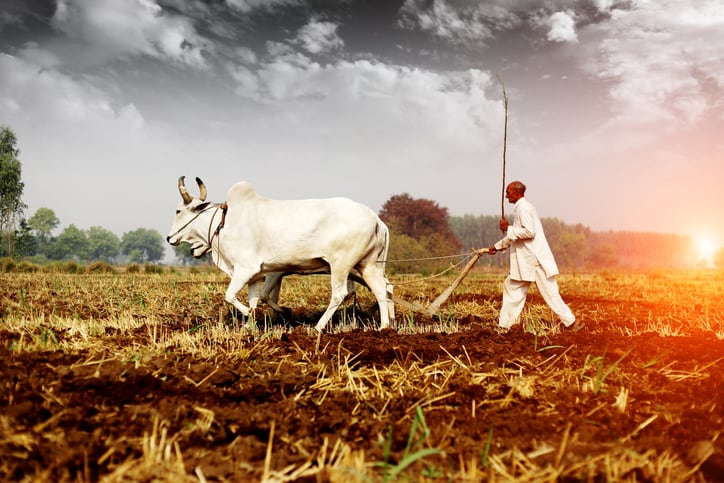India's agtech sector is witnessing significant developments driven by government policies, changing investor landscapes and a growing focus on sustainability. However, market fragmentation is dampening its ability to scale up, with challenges surrounding sustainability and food security looming large.
Of late, initiatives like the revival of millet cultivation supported by the government are fostering the growth of start-ups. India is also seeing a surge in digital agtech start-ups maturing, with excitement around the precision fermentation sector. The latter leverages India's innovation capabilities and abundant resources, potentially rivalling China in this domain.
Furthermore, the government has introduced policies to improve farmers’ livelihoods and make Indian agriculture more climate-resilient. In addition to significant budgets for R&D in areas like stress-tolerant crops and pest resistance, initiatives like e-NAM (National Agriculture Market) and support for digitising agriculture demonstrate the government's commitment to modernizing the sector.
But scaling up in India's agtech sector faces challenges due to the fragmented market, especially in smallholder farming communities. Venture capitalist (VC) funding is also becoming more challenging, with investors increasingly seeking profitability paths. At the same time, start-ups are urged to focus on demonstrating product-market fit rather than raising funds for features and services.
Scaling and funding issues
ID Capital founder Isabelle Decitre told AgTechNavigator: “Challenges in scaling up are common across geographies. In any smallholder farmer country like India, it is inevitably linked to the fragmentation of the market.”
She added that while she was unsure whether the future of smallholding in India would be geared towards consolidation, South India was already seeing the rise of medium-scale farmers. “These farmers invest in their activity and are up for embracing digitisation. If it were to become a more widely spread pattern, it could boost the scale of agtech in a dramatic way,” said Decitre.
Cropin’s chief customer and marketing officer, Sujit Janardanan, said: “A significant challenge is the historically low adoption of technology in agriculture compared to other industries. Existing solutions, retro-fitted from other sectors, have failed to address the nuanced challenges of agriculture.”
He added that educating industry stakeholders about the benefits of digitising farming was “a continuous effort” amid India’s complex market, which was “characterised by diverse languages, cultures, and agricultural practices across states”.
In terms of securing agtech funding in India, Decitre said, “The winter of VC is finally hitting India and it’s certainly more difficult to raise (funds) now. From Series A onwards, investors are now consistently asking to demonstrate a path to profitability — the quicker, the better. A couple of years ago, this would have been expected later in the life of a start-up. Interestingly, late-stage VC funds behave more like growth equity providers as their risk appetite drops.”
Governmental balance
India’s government appears to offer some encouragement with several key policies, as well as a US$16B annual budget from the Ministry of Agriculture and Farmers Welfare. These policies include R&D funding from the National Institute For Plant Biotechnology (NIPB) for projects addressing stress tolerance due to climate change, pest-resistant crops and grain quality, and leads to agtech spin-offs.
Decitre revealed that the International Crops Research Institute for the Semi-Arid Tropics (ICRISAT) was focusing on enhancing diversity, productivity, production, nutrition quality and profitability of grains, legumes and cereals, for which they have established an agtech start-up incubator called iHub.
Another noteworthy initiative is the Digital Public Infrastructure (DPI) for agriculture, which Janardanan said was “designed as an open-source, open-standard and interoperable public good”, adding: “This initiative aims to provide inclusive and farmer-centric solutions, offering crucial information services for crop planning, health, improved access to farm inputs, credit, insurance, crop estimation, market intelligence and more,” he said.
“Additionally, the Agricultural Accelerator Fund has injected significant support into the agtech ecosystem, particularly benefiting early-stage start-ups. This initiative catalyses digital adoption and the expansion of digital solutions available to farmers, fostering innovation and growth in the sector.”
Another commendable effort, he said, was the AgriStack or India Digital Ecosystem for Agriculture (IDEA), which has envisioned the creation of a unified database of agricultural datasets and played a pivotal role in reshaping and modernising farming practices in the country.
However, Decitre said, “The deployment of such funding is sometimes plagued with saddening inefficiencies. It’s the case, for instance, for centrally sponsored schemes such as Rashtriya Krishi Vikas Yojana (RKVY), which are decided by the Ministry but executed by state governments, and funds have partially been unutilised.”
Public-private alignment
The prospect of greater alignment between the public and private sectors offers some hope to India’s agtech industry and its role in improving sustainability and food security in the country. Currently, India ranks 69th in The Economist Impact’s Global Food Security Index.
With 31% of its children stunted and 33% underweight, Decitre believes improving its food security is “the foundation of social and economic sustainability”. She added that the country must urgently address challenges such as access to water, micronutrient availability, protein supply and reliance on chronic food aid.
She said, “There is no doubt sustainability efforts in India’s agtech sector are part of this larger imperative and there is no room for ‘nice-to-have’ innovations. Then (only) can there be different priorities and level of support assigned to different initiatives.
“For instance, dairy contributes the most to Indian households’ protein supply, so one can’t imagine the government supporting alternative dairy at the expense of the traditional dairy industry. Not that they are mutually exclusive but in a politically loaded debate, I would still expect traditional farming to get the bulk of the support.
“One hope I have for Indian agtech is that the country will manage to leverage digital tools to implement carbon credit and ecosystem services payments that will provide additional income to farmers. We know it can work in theory but from theory to practice, there is a gap no country has bridged yet.”
Likewise, Janardanan believes agtech plays a critical role in India’s sustainability and food security and that its adoption is “a fundamental necessity” that would lead to greater productivity and cost optimisation for farmers amid escalating operational expenses.
Considering the impacts of climate change and supply chain disruptions, he said, agricultural businesses can benefit from transparent insights into farming operations that can fortify supply chain efficiency. “In essence, mass adoption of agtech is imperative for India’s agriculture stakeholders, as it represents a proactive commitment to national sustainability and the overarching domestic food security agenda,” said Janardanan.
Exciting endeavours
Despite the aforementioned challenges in Indian agtech, the future seems hopeful in this regard. In Decitre’s opinion, India is “literally ‘incredible’ when it comes to agtech, in that everything seems to be possible — from the revival of the cultivation of the humble millet to the potential of LLMs (large language models) trained in several Indic languages to deliver farmer advisory services”.
She further said: “For the longest time, India agtech was best described as a growing pool of digital start-ups. Then came a generation of food and food-tech start-ups and a timid spurt of agbiotech initiatives. Some of the early digital agriculture players have now reached adulthood.
“What will be critical in the next two to three years is to see some exits materialising, not only because it will inspire trust in this asset class but also because it will act as a value pointer to identify the most relevant go-to-market partners for start-ups.”
Calling India’s social fabric one of “extreme richness and complexity”, she said this translated into the complexity of identifying the right partner, such as in the case of upcoming biological start-ups. Between a rarefied pool of leading agro-chemical companies and the costly, risky option of developing their own sales force, many are trying to find more suitable distribution channels and turn to farmer-producer organisations.
Decitre added: “One domain I am particularly excited about is precision fermentation, where India has the potential to combine deep-tech innovation, access to abundant feedstock and competitive manufacturing capabilities; only China can rival this combination.
“But I would not commit to predicting the future of agtech because in India, it comes with the double challenge of predicting economics and politics: agriculture is an important national subject where you can expect decisions to be tightly interwoven with political agendas.”
Janardanan believes agtech adoption in India is at “an inflection point, with an unprecedented demand surge”. He highlighted India's distinctive approach to technology adoption, characterised by “a gradual pace followed by an exponential leap once the journey commences”.
On the policy front, the Indian government is actively promoting new technology adoption, introducing policy-level changes and launching initiatives such as accelerator funds for agtech start-ups. Development agencies like the World Bank and ADPC also contribute to farmer empowerment, climate mitigation and financial inclusion, all while agtech attracts growing investor interest.
Janardanan said, “While the current financial year saw a temporary drop in funding due to global market headwinds, agtech investments in India have been witnessing an overall upward trajectory. I foresee a resurgence of investor enthusiasm and activity in 2024 as investors increasingly view agtech investments as essential components of climate action. What makes this period particularly exciting is the shifting focus from an 'India for India' approach to a 'global India' perspective, and Indian agtech is poised to become a lifeline for global markets.
Opportunity in necessity
According to Janardanan, the multiple benefits of agtech in India have led to its adoption being considered a necessity in the eyes of not just industry but also government. He said, “Governments, agricultural businesses and farmers alike are recognising the need for enhanced efficiency, supply chain resilience, increased productivity and sustainable practices. In this evolving landscape, agtech adoption is not just beneficial but mandatory.”
Agricultural digitisation in particular appears to hold promise, with Decitre saying: “Some domains of agtech can be more or less prominent in the government’s agenda depending on times, states and recent events but one thing is sure: digitisation is one of the stalwarts of any agricultural modernisation strategy and the government has been committed to it for a long time.”


